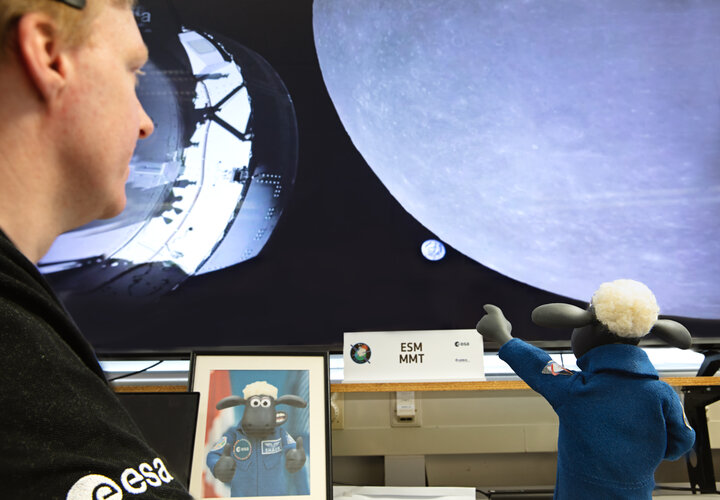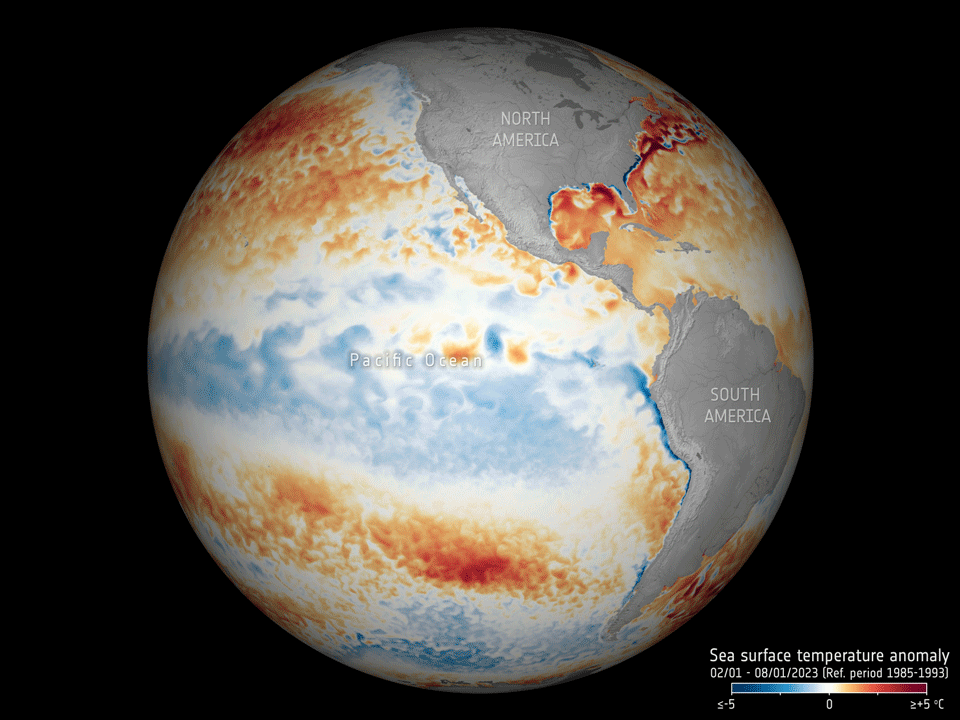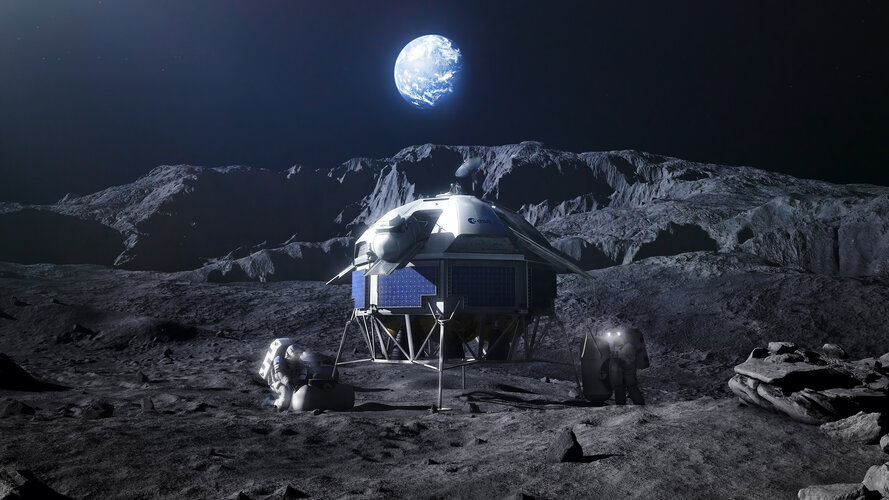UK leads Europe in race for space investment, new report finds
Thursday, 18 May 2023 09:24 A PwC-UK Space Agency report reveals the UK is the most attractive destination for private investment in space after the US.
New analysis from investment experts offers insight on the wealth of opportunities found within the UK's 17.5 billion pounds space sector.
The 'Expanding frontiers - The down to earth guide to investing in space' report, produced by PwC in association with the
A PwC-UK Space Agency report reveals the UK is the most attractive destination for private investment in space after the US.
New analysis from investment experts offers insight on the wealth of opportunities found within the UK's 17.5 billion pounds space sector.
The 'Expanding frontiers - The down to earth guide to investing in space' report, produced by PwC in association with the UAE partnerships boost commercial space opportunities
Thursday, 18 May 2023 09:24 Bayanat and Al Yah Satellite Communications have announced a comprehensive Space Program aimed at building national satellite remote sensing and Earth Observation (EO) capabilities within the UAE to commercially address business opportunities in the local and global EO market.
The program forms part of the two companies' partnership with ICEYE, a renowned SAR satellite manufacturer based i
Bayanat and Al Yah Satellite Communications have announced a comprehensive Space Program aimed at building national satellite remote sensing and Earth Observation (EO) capabilities within the UAE to commercially address business opportunities in the local and global EO market.
The program forms part of the two companies' partnership with ICEYE, a renowned SAR satellite manufacturer based i Sidus Space contracts with Leaf Space for additional ground station coverage
Thursday, 18 May 2023 09:24 Sidus Space Inc. (NASDAQ: SIDU), a pioneer in the Space and Defense-as-a-Service satellite sector with a keen focus on manufacturing mission-critical hardware, providing multi-disciplinary engineering services, satellite design, production, launch planning, mission operations and in-orbit support, has today expressed delight in announcing the signing of a pivotal service agreement with Leaf Spac
Sidus Space Inc. (NASDAQ: SIDU), a pioneer in the Space and Defense-as-a-Service satellite sector with a keen focus on manufacturing mission-critical hardware, providing multi-disciplinary engineering services, satellite design, production, launch planning, mission operations and in-orbit support, has today expressed delight in announcing the signing of a pivotal service agreement with Leaf Spac New Beidou satellite launches into orbit
Thursday, 18 May 2023 09:24 China launched a Long March 3B carrier rocket on Wednesday morning to transport a satellite into space for the country's Beidou Navigation Satellite System, marking the first deployment of a Beidou satellite in three years.
As the countdown ticked down to zero at 10:49 am at the Xichang Satellite Launch Center in the southwestern mountainous region in Sichuan province, eight engines on the
China launched a Long March 3B carrier rocket on Wednesday morning to transport a satellite into space for the country's Beidou Navigation Satellite System, marking the first deployment of a Beidou satellite in three years.
As the countdown ticked down to zero at 10:49 am at the Xichang Satellite Launch Center in the southwestern mountainous region in Sichuan province, eight engines on the Chinese aerial remote sensing system obtains mountain, glacier detection data
Thursday, 18 May 2023 09:24 A Chinese aerial remote sensing system has obtained effective mountain glacier detection data through an ongoing combined detection experiment.
The Chinese Academy of Sciences (CAS) and Wuhan University are conducting a sky-ground scientific experiment to test the condition of glaciers in the Haibei Tibetan Autonomous Prefecture in northwest China's Qinghai Province.
The experiment h
A Chinese aerial remote sensing system has obtained effective mountain glacier detection data through an ongoing combined detection experiment.
The Chinese Academy of Sciences (CAS) and Wuhan University are conducting a sky-ground scientific experiment to test the condition of glaciers in the Haibei Tibetan Autonomous Prefecture in northwest China's Qinghai Province.
The experiment h U.K. government won’t buy Virgin Orbit
Thursday, 18 May 2023 09:13
The British government, which helped buy OneWeb out of bankruptcy three years ago, has no plans to do the same with launch company Virgin Orbit, a government minister said May 17.
Shaun to the Moon and baaa-ck
Thursday, 18 May 2023 08:04 Image:
Shaun to the Moon and baaa-ck
Image:
Shaun to the Moon and baaa-ck Amini gets initial funding for closing Africa’s environmental data gap
Thursday, 18 May 2023 04:00
Climate data startup Amini has raised $2 million for a satellite constellation to gather more Africa-focused environmental information.
Space Force selects Parsons to develop ground system for missile-warning satellites
Wednesday, 17 May 2023 20:50
The U.S. Space Force awarded Parsons a $55 million contract to develop a ground system for a network of missile-warning satellites in medium Earth orbit.
Space Force official: Lack of communication with China increases risk of mishaps in orbit
Wednesday, 17 May 2023 20:03
Lt. Gen. DeAnna Burt said a lack of communication between the U.S.
Our oceans are in hot water
Wednesday, 17 May 2023 13:30
Adding to the grim list of record ice losses, record air temperatures and record droughts, which have all hit the headlines recently, the temperature of the surface waters of our oceans is also at an all-time high. With an El Niño looming, concerns are that we will soon be facing even worse extremes. Satellites orbiting overhead are being used to carefully track the patterns that lead up to El Niño to further understand and predict the consequences of this cyclic phenomenon against the backdrop of climate change.
Republican senators claim NASA being distracted by climate change and diversity initiatives
Wednesday, 17 May 2023 09:10
Republican senators used a hearing on NASA’s fiscal year 2024 budget proposal to criticize the agency’s role in topics like climate change and social issues they argued were a distraction to its efforts to return humans to the moon.
Virtual reality brings ESA’s Argonaut Moon lander to life
Wednesday, 17 May 2023 09:07
A team of students and researchers are using virtual reality (VR) to bring ESA’s Argonaut lunar lander concept to life at the European Astronaut Centre.
Argonaut is a lunar lander that will deliver scientific instruments and cargo to the Moon at the end of this decade. Interns and scientists involved in the simulations are part of ESA’s Extended Reality (XR) laboratory, German Aerospace Centre DLR and the Spaceship EAC initiative.
When it comes to satellite data, sometimes more is more
Wednesday, 17 May 2023 08:55 There are roughly 7,000 satellites whizzing around the Earth, scanning our planet's surface and generating hundreds of terabytes of data every day. These satellites are operated by many different governments and commercial entities and the data they produce are scattered across different stakeholders with different agendas, making it impossible for any single research team to leverage the full p
There are roughly 7,000 satellites whizzing around the Earth, scanning our planet's surface and generating hundreds of terabytes of data every day. These satellites are operated by many different governments and commercial entities and the data they produce are scattered across different stakeholders with different agendas, making it impossible for any single research team to leverage the full p AFRL, NASA partner with 8 universities for new mission concept program
Wednesday, 17 May 2023 08:55 The Air Force Research Laboratory, or AFRL, and NASA announced their collaboration with eight universities for a new Mission Concept Program, or MCP, from Jan. 5 to Feb. 3, 2024. The program, sponsored by AFRL's Space Vehicles Directorate, is held under the University Nanosatellite Program, or UNP, which started in 1999 and has collaborated with over 40 universities since its inception.
Th
The Air Force Research Laboratory, or AFRL, and NASA announced their collaboration with eight universities for a new Mission Concept Program, or MCP, from Jan. 5 to Feb. 3, 2024. The program, sponsored by AFRL's Space Vehicles Directorate, is held under the University Nanosatellite Program, or UNP, which started in 1999 and has collaborated with over 40 universities since its inception.
Th 
